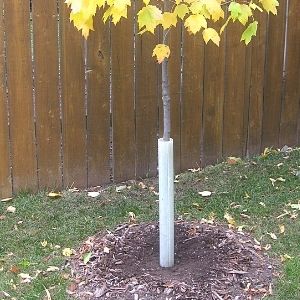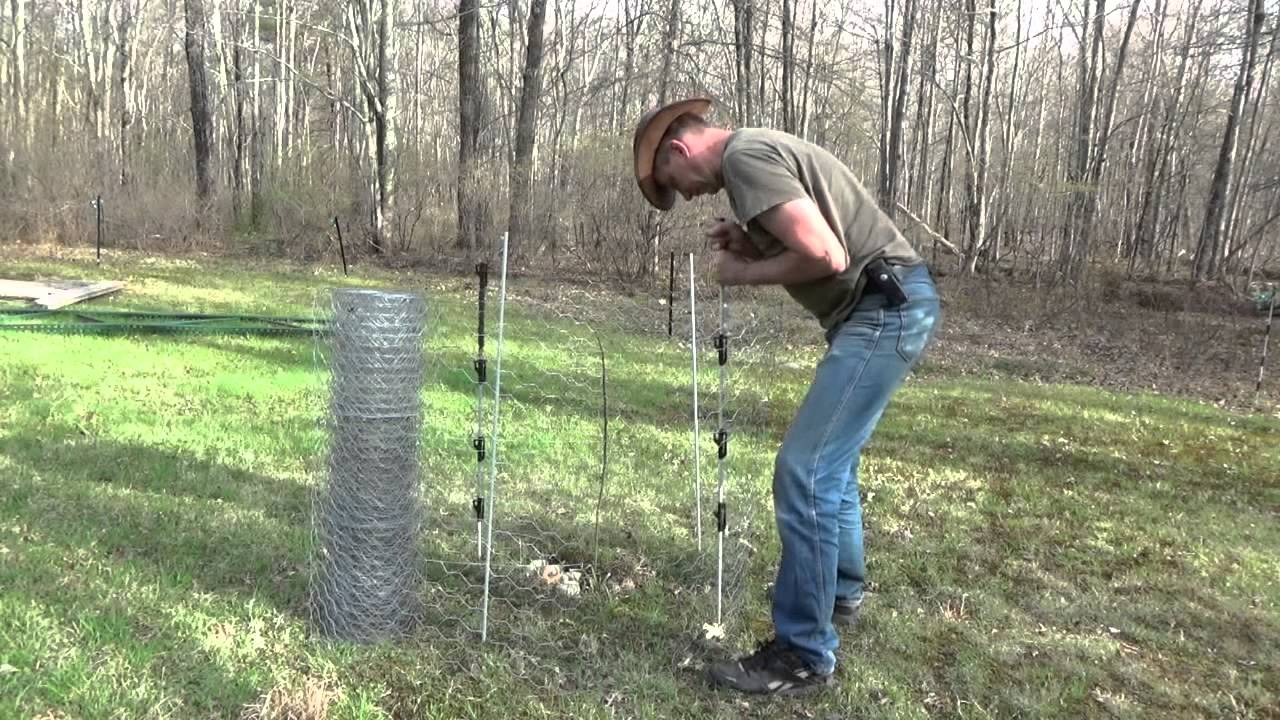To protect young trees, provide a physical barrier around the tree trunk and mulch the area to suppress competing weeds. When planting young trees, it is important to take steps to protect them from potential threats to their health and growth.
Young trees are vulnerable to damage caused by wildlife, extreme weather conditions, and human activities. Protecting young trees involves providing physical protection, such as installing a tree guard or fence around the tree trunk to prevent animals from nibbling on the bark or damaging the tree in other ways.
Additionally, applying mulch around the base of the tree can help suppress competing weeds and conserve moisture in the soil, promoting healthy growth. By taking these measures, you can help ensure that your young trees have the best chance of thriving and reaching their full potential.

Credit: www.yourleaf.org
What Makes Young Trees Vulnerable
Young trees are vulnerable to various threats, including weather elements, wildlife damage, and incorrect planting and care. Weather elements such as strong winds, heavy rainfall, and extreme temperatures can easily damage the delicate structure of young trees. Wildlife, like browsing animals, can also pose a risk by nibbling on the tender bark, leaves, or branches.
Moreover, improper planting techniques and inadequate care can hinder the healthy growth of young trees. It is crucial to plant trees correctly, ensuring proper depth and spacing, and providing adequate water, nutrients, and protection. Regular monitoring and timely pruning can help maintain the shape and stability of young trees.
By taking proactive measures and providing the necessary care, we can protect young trees and ensure their healthy development for the future.
How to Protect Young Trees: Step by Step Guide
Creating A Protective Barrier
Creating a protective barrier around young trees is essential for their growth and survival. One effective method is using tree guards and fencing to shield them from animals and prevent damage. Another approach is mulching, which helps prevent weed competition and retains moisture for the tree’s roots.
Staking is also important to provide stability and support until the tree establishes deep roots. By implementing these measures, young trees are given the best chance to thrive and reach their full potential. The well-being of these trees is crucial for the ecosystem and contributes to a healthier environment.
Keep in mind the significance of protection when it comes to sustaining young trees. With the right strategies and careful attention, we can ensure their long-term success. Maintain the protection and care needed for young trees to flourish.
Essential Maintenance Practices
Regular watering is crucial for the protection of young trees. It helps in their early development. Pruning the trees is essential to achieve proper shape and improve their strength. Maintaining a balanced canopy structure is important. Monitoring for pest and disease is necessary to prevent any potential damage.
It ensures the overall health and longevity of the trees. By adhering to these practices, young trees can thrive and withstand environmental challenges. Remember, as a responsible gardener, your attention and care are pivotal to nurturing the growth of young trees.
So, make sure to water them regularly, prune them wisely, and keep an eye out for any signs of pest or disease. Your efforts will bear fruitful results and contribute to a greener and healthier environment.
Frequently Asked Questions On How To Protect Young Trees
How Can I Protect Young Trees From Pests?
To protect young trees from pests, you can use organic insecticides and repellents, such as neem oil or garlic spray. Additionally, you can attract beneficial insects, like ladybugs, to your garden to help control pests naturally. Regularly inspecting the trees and removing any pest-infested branches can also prevent further damage.
What Is The Best Way To Prevent Damage From Extreme Weather?
To protect young trees from extreme weather, you can use tree wraps or burlap to provide insulation during winter months. Mulching around the base of the tree can help retain moisture and regulate soil temperature. It’s also important to water the trees during drought periods and prune any damaged or weak branches to reduce the risk of storm damage.
How Often Should I Water Young Trees?
Young trees should be watered deeply once or twice a week, especially during hot and dry weather. Allow the soil to dry between waterings to promote root growth and prevent diseases caused by over-watering. Monitor the moisture level by sticking your finger 1-2 inches into the soil.

If it feels dry at that depth, it’s time to water.
Conclusion
Protecting young trees is crucial for their long-term health and vitality. By following a few simple steps and investing some time and effort, we can ensure the success of these delicate saplings. One important measure is to provide adequate support through staking, especially in areas prone to strong winds or high foot traffic.
Regular watering is essential, particularly during hot and dry periods, to keep the young trees hydrated and promote root development. Mulching around the base of the tree helps conserve moisture, control weeds, and maintain a stable soil temperature. Additionally, protecting young trees from pests and diseases, such as using organic pesticides or natural predators, can prevent damage and ensure their survival.
With proper care, these young trees will grow into beautiful and resilient assets for our environment, providing shade, improving air quality, and enhancing our overall well-being. Remember, the future of our ecosystem lies in our hands, and protecting young trees is an investment in a greener and healthier tomorrow.

